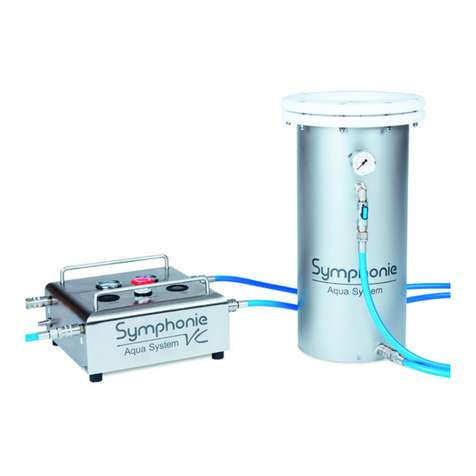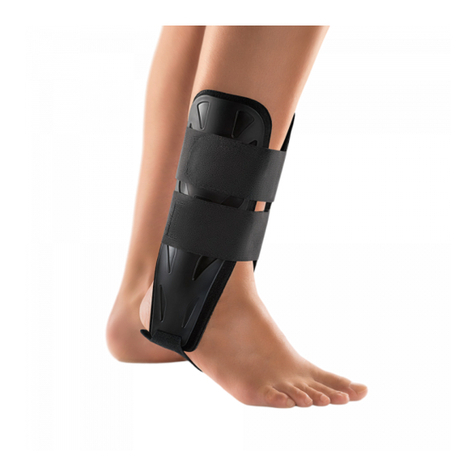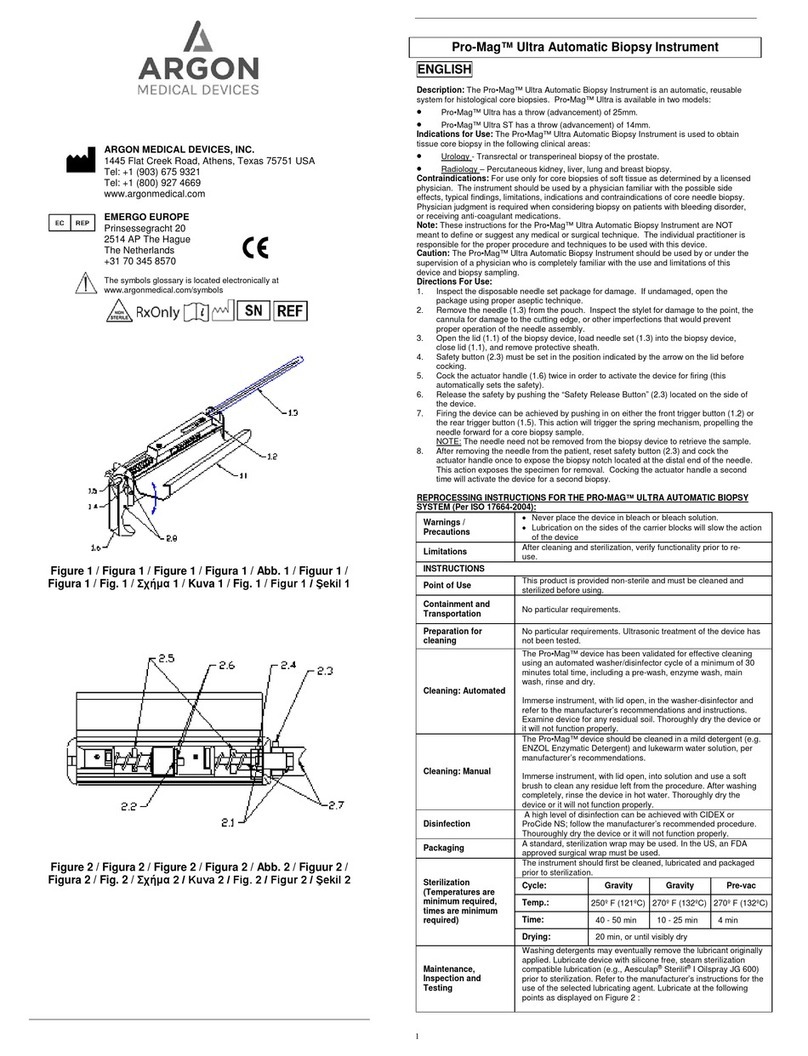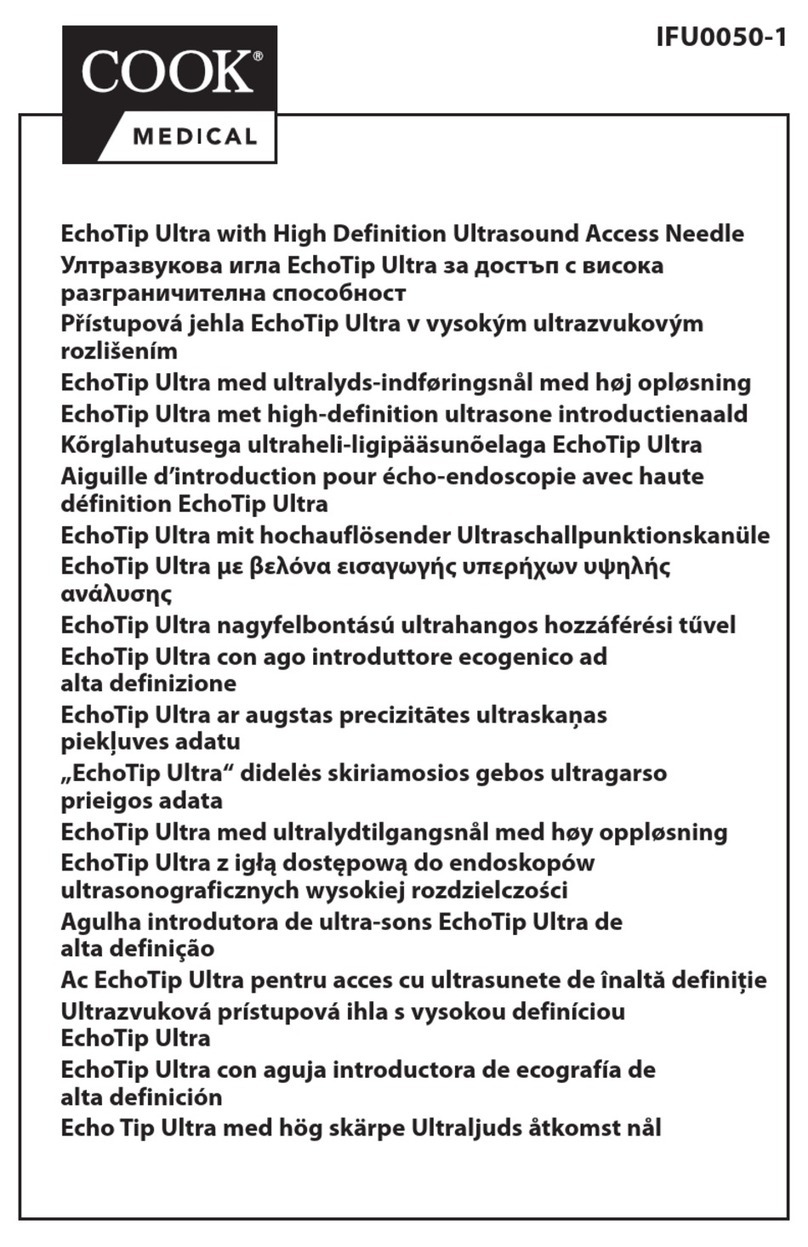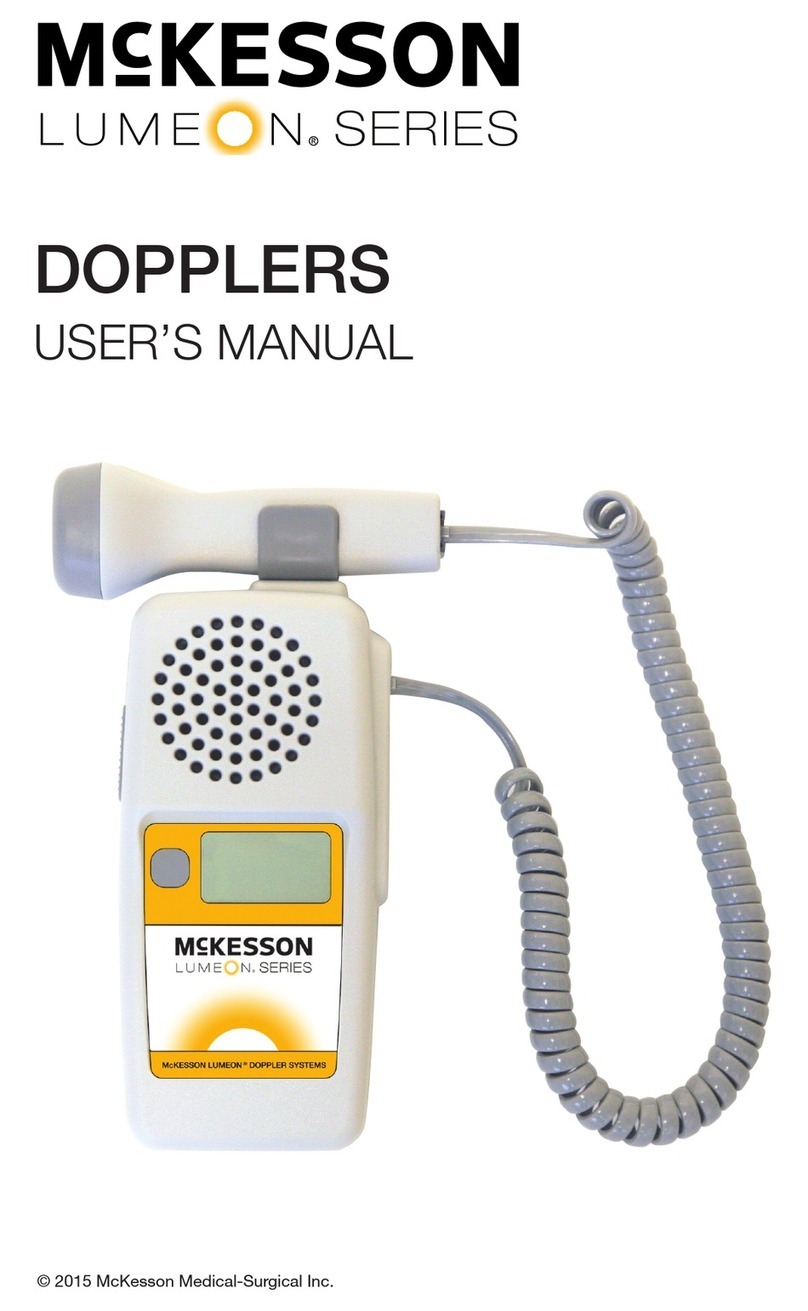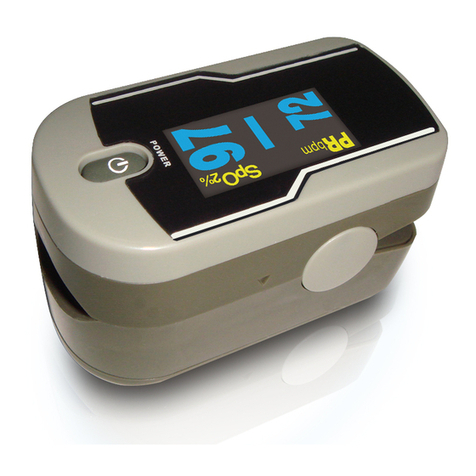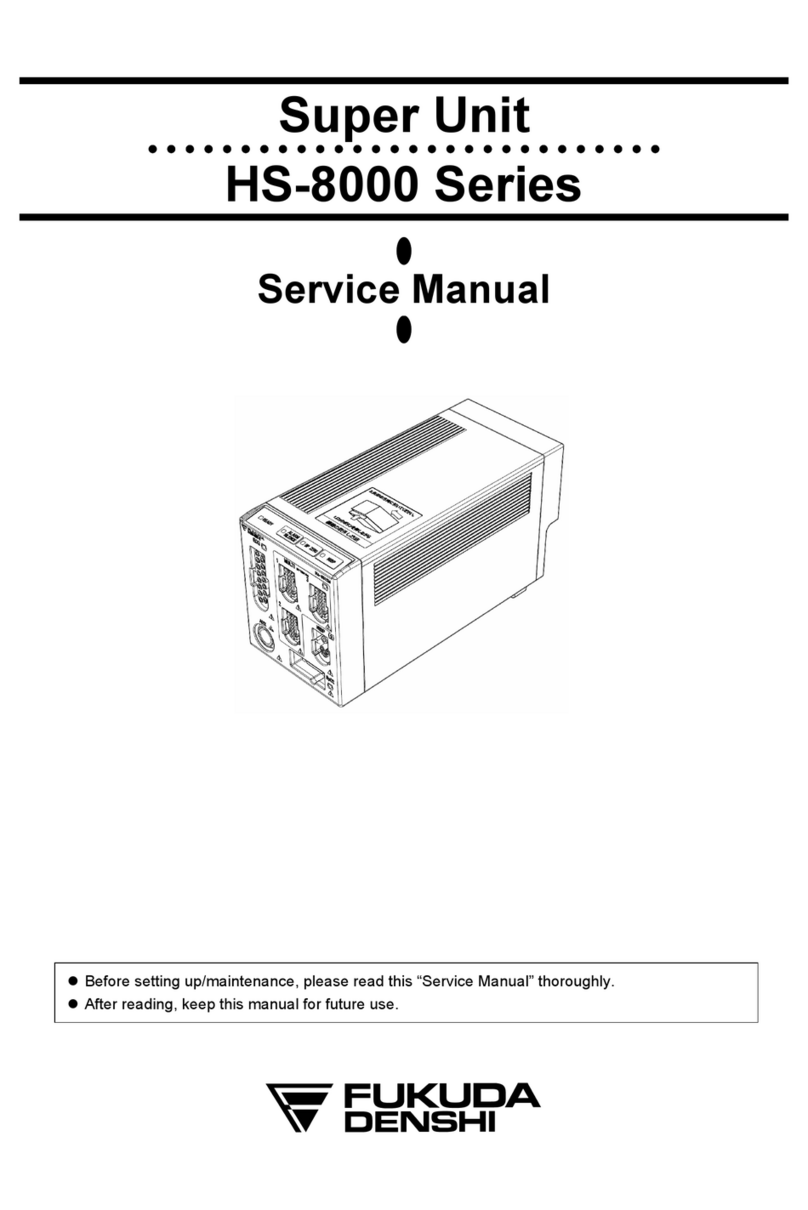Romedis Symphonie Aqua User manual

Gebrauchsanleitung |Instructions for use

GEBRAUCHSANLEITUNG
INSTRUCTIONS FOR USE
INSTRUCCIONES DE USO
INSTRUCTION D‘EMPLOI
ISTRUZIONI PER L’USO
GEBRUIKSAANWIJZING
INSTRUÇÕES DE UTILIZAÇÃO

4 5
1. Sicherheitshinweise und Vorsichtsmaßnahmen ....................... 11
2. Wichtige Bauteile ..................................................... 12
3. Beschriftung des Gerätes ............................................ 12
4. Benötigtes Material .................................................. 12
5. Vorbereitung ......................................................... 14
6. Verwendung .......................................................... 16
7. Membranaustausch .................................................. 19
8. Wartungs- und Pflegehinweise ........................................ 22
9. Aufbewahrung und Transport ......................................... 23
GEBRAUCHSANLEITUNG GER 941
25 57
1. Notes regarding safety; precautionary measures ...................... 27
2. Important components ............................................... 28
3. Labeling of the device ................................................ 28
4. Required materials ................................................... 28
5. Preparation .......................................................... 30
6. Use .................................................................. 32
7. Replacing the membranes ............................................ 35
8. Instructions regarding care and maintenance .......................... 38
9. Storage and transport ................................................ 39
INSTRUCTIONS FOR USE ENG
1. Indicaciones de seguridad y precauciones ............................ 43
2. Componentes importantes ........................................... 44
3. Rotulación del aparato ............................................... 44
4. Material necesario ................................................... 44
5. Preparación .......................................................... 46
6. Uso .................................................................. 48
7. Cambio de membrana ................................................. 51
8. Instrucciones de mantenimiento y conservación ....................... 54
9. Almacenamiento y transporte ......................................... 55
INSTRUCCIONES DE USO ES
1. Indications de sécurité et mesures de précaution ..................... 59
2. Composants importants .............................................. 60
3. Inscriptions apposées sur l‘appareil .................................. 60
4. Matériel requis ....................................................... 60
5. Préparatifs ........................................................... 62
6. Utilisation ............................................................ 64
7. Échange de la membrane ............................................. 67
8. Indications de maintenance et d‘entretien .............................. 70
9. Entreposage et transport .............................................. 71
INSTRUCTION D‘EMPLOI FR

6 7
1. Indicações de segurança e medidas de precaução .................... 107
2. Componentes importantes ........................................... 108
3. Rotulagem do aparelho ............................................... 108
4. Material necessário .................................................. 108
5. Preparação ........................................................... 110
6. Utilização ............................................................ 112
7. Substituição da membrana ........................................... 115
8. Indicações de manutenção e conservação ............................ 118
9. Armazenamento e transporte ......................................... 119
INSTRUÇÕES DE UTILIZAÇÃO
POR
1. Veiligheidsinstructies en voorzorgsmaatregelen ....................... 91
2. Belangrijke onderdelen ............................................... 92
3. Opschrift op het apparaat ............................................ 92
4. Benodigd materiaal ................................................... 92
5. Voorbereiding ........................................................ 94
6. Gebruik .............................................................. 96
7. Vervanging van de membraan ......................................... 99
8. Onderhouds- en instandhoudingsaanwijzingen ......................... 102
9. Opslag en transport .................................................. 103
GEBRUIKSAANWIJZING NL
1. Avvertenze per la sicurezza e misure di cautela ....................... 75
2. Pezzi importanti ...................................................... 76
3. Stampigliature ....................................................... 76
4. Materiale ............................................................ 76
5. Preparazione ......................................................... 78
6. Utilizzo ............................................................... 80
7. Sostituzione membrane .............................................. 83
8. Istruzioni per manutenzione e cura .................................... 86
9. Custodia e trasporto ................................................. 87
ISTRUZIONI PER L’USO IT 73 105
89 120
IMPRESSUM |IMPRINT

9
GEBRAUCHSANLEITUNG GER
Sehr geehrter Symphonie Aqua-Anwender,
vielen Dank, dass Sie sich für das Symphonie Aqua System entschieden haben.
Dieses innovative Abdrucksystem wurde für die Orthopädietechnik entwickelt und
gefertigt. Umfangreiche Qualitätssicherung, Dokumentation, sowie engmaschige
Tests zur Sicherstellung der fehlerfreien Fertigung unserer Artikel, sind grundlegend
für Qualitätsprodukte der Firma Romedis GmbH.

11
Bitte lesen Sie vor Inbetriebnahme die
Gebrauchsanleitung aufmerksam durch,
bewahren Sie diese sorgfältig und zu-
gänglich auf.
Das Symphonie Aqua System wurde
exklusiv für die Orthopädietechnik
entwickelt. Es ist ausschließlich zur
Herstellung eines Gipsabdrucks der
unteren Extremität nach transtibialer
Amputation bestimmt. Die Verwendung
für andere Zwecke ist nicht freigege-
ben. Der zugelassene Maximalumfang
des Unterschenkel - Stumpfes für das
Symphonie Aqua System beträgt max.
58cm (gemessen 10 cm über Patella).
Das Symphonie Aqua System ist für
das maximale Körpergewicht von
170kg freigegeben. Der Benutzer ist
verantwortlich für die sachgemäße Ver-
wendung, Anwendung des Geräts, sowie
für Unfälle und Gefahren, die gegenüber
Personen oder Eigentum auftreten.
Bitte geben Sie das Gerät nur an
Personen weiter, die mit der qualifizier-
ten Anwendung vertraut sind. Prüfen Sie
das Gerät vor Einsatz auf Schäden und
Funktionsfähigkeit. Bitte verwenden
Sie nur, auf das Symphonie Aqua System
abgestimmte Original- und Ersatzteile
der Firma Romedis. Verwenden Sie
1. SICHERHEITSHINWEISE UND VORSICHTSMAßNAHMEN
keine scharfen oder säurehaltigen
Reiniger! Nach 12 Monaten wird der
Membranwechsel empfohlen. Die
Produkte der Romedis GmbH werden
ständig weiterentwickelt. Änderungen
in Form, Technik und Ausstattung be-
halten wir uns vor. Aus Angaben und
Abbildungen dieser Anleitung können
deshalb keine Ansprüche abgeleitet
werden. Bitte beachten Sie länderbezo-
gene Vorschriften und Bestimmungen.
In dieser Anleitung erhalten Sie wich-
tige Informationen über den korrekten
Einsatz des Symphonie Aqua Systems,
dessen Inbetriebnahme, Wartung und
Reinigung.
HINWEISE
· Lesen Sie die Gebrauchsanleitung sorgfältig durch.
· Prüfen Sie vor jedem Gebrauch den Zustand des Gerätes.
· Verwenden Sie zur Reinigung keine Reinigungsmittel
oder Gegenstände.
· Reinigen Sie nur mit einem weichen Tuch.
· Fetten Sie die Membran vor jedem Gebrauch übermäßig ein!
· Stellen Sie eine Haltemöglichkeit zur Verfügung.
· Entfernen Sie sich nicht während des Gipsabdrucks.
· Vor Befüllung öffnen Sie die Entlüftungsschraube!
· Achtung Rutschgefahr!
Sicheren, stabilen Stand des Gerätes generieren!
· Ausgleichsbehälter, Verbindungen und Schlauch schützen.
· Nicht in der Nähe von Strom oder offenem Feuer verwenden.
· Nur für den angegebenen Zweck verwenden.

12 13
2. WICHTIGE BAUTEILE
2
3. BESCHRIFTUNG DES GERÄTES
Das Symphonie Aqua System besteht aus:
1. Druckbehälter
2. Hydrostatische Silikonmembran
3. Druckmanometer
4. Sperrhahn
5. Verbindungsschlauch
6. Ausgleichsbehälter
7. Auffüllkupplung
Do not open - Nicht öffnen
Warnung vor Beschädigung des Gerätes
Venting - Entlüftung
Nur zur Entlüftung nach Befüllung, laut Anleitung.
Die Artikelnummer finden Sie auf der Rückseite
des Geräts. Bitte bei Bedarf bereithalten
4. BENÖTIGTES MATERIAL
· Zur Befüllung bitte nur Leitungswasser
ohne Zusätze verwenden.
· Gipsbinden, 15 cm breit
· Schutzfolie
·Ausreichend Gipsisoliercreme
· 3 dünne Nylonstrümpfe
· Gipseimer mit Wasser
3
4
5
6
7
1

14 15
den Schlauch anschließend mit dem
Ausgleichsbehälter (Abb. 10).
Den Ausgleichsbehälter nicht am Boden
schleifen, zerren. Achten Sie auf die
Anschlüsse!
Die Verbindungen, sowie Bauteile vor
Beschädigung und Stoß schützen. Das
Gerät nur komplett montiert verwenden.
Das System ist nun einsatzbereit (Abb. 11).
Bei Lieferung sind alle Komponenten
des Systems fertig montiert und auf
Dichtigkeit geprüft.
Vor Inbetriebnahme des Systems, ent-
koppeln Sie den Ausgleichsbehälter
vom Verbindungsschlauch und stecken
die Auffüllkupplung auf das Schlauch-
ende (Abb. 1).
Legen Sie den leeren Zylinder schräg, die
Entlüftungsschraube nach oben (Abb. 2).
Entfernen Sie die Entlüftungsschrau-
be (Abb. 3) und öffnen Sie anschlie-
ßend den Sperrhahn (Abb 4).
5. VORBEREITUNG
Verbinden Sie nun das System durch
die Auffüllkupplung mit dem Wasser-
hahn.
Starten Sie langsam das Befüllen des
Zylinders mit Wasser.
Verwenden Sie nur Wasser!
Legen Sie den Zylinder schräg, Entlüf-
tungsventil zeigt nach oben, um eine völ-
lige Entlüftung sicherzustellen (Abb. 5).
Wichtig: Bitte achten Sie auf eine voll-
ständige Befüllung mit Wasser, ohne
Luftblasen.
Dies ist erreicht, wenn in
dieser Position Wasser aus der Entlüf-
tungsöffnung austritt (Abb. 6).
Nach der Befüllung bitte das erhöhte
Gewicht des Zylinders beachten.
Nachdem der Behälter gefüllt ist:
· Verschließen Sie die Entlüftungsöff-
nung wieder (Abb. 7),
·
Schließen Sie den Sperrhahn (Abb. 8),
· Stellen Sie den Zylinder vorsichtig
senkrecht auf den Boden (Einstiegsöff-
nung nach oben). Entfernen Sie die Auf-
füllkupplung (Abb. 9) und verbinden Sie
Abb. 1
Abb. 3
Abb. 4
Abb. 5
Abb. 6
Abb. 7
Abb. 8
Abb. 9 Abb. 11
Abb. 10
Abb. 2

16 17
Sicherheitshinweis: Nicht während des
Gipsabdrucks entfernen!!
Membran nach jeder Anwendung säu-
bern. Reinigungshinweise beachten!
Keine scharfen, säurehaltigen Reini-
ger verwenden!
Um einen korrekten Abdruck herzu-
stellen, benötigen Sie:
Wasser,
Gipsbinden,
Gipsisoliercreme,
3 Nylonstrümpfe.
Bei Schaftsystemen, die einen Liner zur
Befestigung der Prothese verwenden,
kann es vorteilhaft sein, den Abdruck mit
dem entsprechenden Liner durchzuführen.
Gegebenenfalls schützen Sie die textile
Außenfaser des Liners mit einer dünnen
Folie (z.B. Frischhaltefolie) (Abb. 12).
Bitte prüfen Sie vor jedem Gebrauch
den einwandfreien Zustand der Silikon-
membran (Abb. 13).
Prüfen Sie den sicheren Stand des
Patienten, sowie des Zylinders, ggf.
eine Haltemöglichkeit bereitstellen.
Prüfen Sie den Untergrund - Vorsicht
eventuelle Rutschgefahr! Das Gerät
auf ebenem rutschfestem Untergrund
verwenden. An stabilen Standorten
verwenden.
Vor Gebrauch die Höhe des Zylinders
einstellen. Die Oberkante des Zylinders
soll mit der Höhe des Oberschenkels
des sitzenden Patienten übereinstim-
men. Bei Bedarf mitgelieferte Aus-
gleichplatten unter den Zylinder legen.
Die Membran vor dem Abdruck auf der
Innenseite ausgiebig mit Gipsisolier-
creme einstreichen.
Zuvor lassen Sie das im Druckbehälter
befindliche Wasser in den Ausgleichs-
behälter fließen (Abb. 14, 15).
6. VERWENDUNG Dazu öffnen Sie den Sperrhahn.
Schließen Sie, nach der Überleitung
des Wassers in den Ausgleichsbehälter,
den Sperrhahn.
Um Reibungsstellen zu vermeiden, fet-
ten Sie anschließend die Membran
großzügig ein.
Anschließend lassen
Sie das Wasser wieder in den Zylinder
zurückfließen. (Sperrhahn dazu öffnen).
Sobald der Zylinder gefüllt ist, schlie-
ßen Sie den Sperrhahn.
Während der Anbringung der Gips-
binden sitzt der Patient!
Um die Gipsbinden blasenfrei auf den
Liner zu wickeln, empfehlen wir, über
die Folie einen dünnen Nylonstrumpf zu
ziehen (Abb. 16).
Umwickeln Sie den Stumpf mit nassen
Gipsbinden abwechselnd im- und ge-
gen den Uhrzeigersinn. Umwickeln Sie
den gesamten Stumpf (Abb. 17).
Wickeln Sie ohne Spannung!
Die Anzahl der Lagen sollte sich an Maß
und Stärke genereller Stumpfabdrücke
orientieren. Um Beschädigungen zu ver-
hindern, bitte nicht zu dünn umwickeln.
Bitte achten Sie darauf, das distale
Ende zu verschließen. Streichen Sie
den Gips anschließend glatt.
Tipp: Verwenden Sie kaltes Wasser, um
ein vorzeitiges Aushärten der Gips-bin-
den zu verhindern.
Abb. 12
Abb. 13
Abb. 15
Abb. 14
Abb. 16
Abb. 17

18 19
Bitte achten Sie darauf, dass der Stumpf
vollständig auf Höhe des proximalen
Schaftrandes in den Zylinder einsinkt. So-
bald die gewünschte Einsinktiefe (abhängig
des proximalen Schaftrands) erreicht ist,
schließen Sie den Sperrhahn (Abb. 22).
Achten Sie darauf, dass der Patient
den Stumpf nun statisch, vollständig
bzw. bestmöglich belastet. Aus Sicher-
heitsgründen bitte Haltemöglichkeit
vorbereiten. Durch den entsprechen-
den Wasserdruck wird der Stumpf
vollkommen gleichmäßig belastet. Be-
sonders vorteilhaft ist die daraus re-
sultierende, belastungsübliche Weich-
teilverschiebung. Bereits während des
Gipsabdrucks.
Je nach Art der verwendeten Gipsbin-
den warten Sie die übliche Aushärtezeit
im völlig belasteten und statischen
Zustand ab. Der Patient kann Ihnen
während der Aushärtezeit bereits wert-
volle Informationen über das Schaft-
volumen und die knöcherne Struktur
des Stumpfes geben. Die, durch das
Körpergewicht, sowie den Wasserdruck
erreichte Kompression auf den Stumpf,
erleichtert das Modellieren des Gips-
modells (Umfangsmaße kontrollieren!).
Nach dem Aushärten der Gipsbinden
reduziert der Patient die Belastung auf
der amputierten Seite. Öffnen Sie den
Sperrhahn erneut und lassen das Was-
ser entweichen. Der Patient kann nun
den eingegipsten Stumpf herausneh-
men. Entfernen Sie den Gipsabdruck
durch langsames Ziehen vom Stumpf.
Beginnen Sie den Herstellprozess eines
Probeschafts.
Nachdem Sie die Gipsbinden aufge-
bracht haben, ziehen Sie einen dün-
nen Nylonstrumpf über den feuchten
Gips (Abb. 18).
Versichern Sie sich, dass der Patient
für die Dauer des Abdrucks die ampu-
tierte Seite stehend belasten kann.
Der Patient kann nun stehend seinen
Stumpf in die Öffnung des Zylinders
einbringen. Bei Weichteilüberhang
empfehlen wir, den Stumpf in den lee-
ren Zylinder einzubringen und erst an-
schließend den Rückfluss des Wassers
zu starten. Somit wird eine übermäßige
Verschiebung der Weichteilsituation
nach proximal verhindert. (Abb. 19)
Um dem Patienten ein gleichmäßiges
Einsinken (Abb. 20) in den Zylinder zu
ermöglichen, öffnen (Abb. 21) Sie nun
den Sperrhahn um das entsprechende
Wasservolumen entweichen zu lassen.
Dieses fließt in den Ausgleichsbehälter.
Abb. 18
Abb. 19
Abb. 21
Abb. 20
Abb. 22
7. MEMBRANAUSTAUSCH
Benötigte Werkzeuge
· 2,5 mm Innensechskantschlüssel
· 4 mm Innensechskantschlüssel
· 10 mm Gabel- oder Ringschlüssel
· Drehmomentschlüssel mit 4 mm
Innensechskantaufsatz
Anleitung
Beachten Sie bitte die Rutschgefahr
durch auslaufendes Wasser.
Nur die Symphonie Aqua-Membran der
Romedis GmbH verwenden!
1. Vor dem Austausch der Membran
muss das gesamte Wasser im Sympho-
nie Aqua System abgelassen werden.
Stellen Sie sicher, dass das Wasser
des Zylinders in ein dafür vorgesehe-
nes Becken fließen kann. Da das Was-
ser frei von Zusätzen ist, kann es über
das gängige Abflusssystem entsorgt
werden. Dafür stellen Sie den Zylinder
über ein Auffangbecken, entkoppeln
Sie Zylinderschlauch und Ausgleichsbe-
hälter und öffnen Sie den Hahn, sowie
die Entlüftungsschraube (Abb. 23, 24).
Abb. 23

20 21
ge
oder Schraubensicherungen und
achten Sie darauf, die Membran
nicht durch spitze Gegenstände oder
Werk
zeuge zu beschädigen (z.B. durch
Schmuck). Die Membran
darf nur so-
weit auf die Schraube
gedreht werden
(ca. 5 Umdrehungen), bis Sie einen
leichten Widerstand haben.
Drehen
Sie keinesfalls weiter, da
ansons-
ten die Membran Schaden nehmen
kann. Spannen Sie nun die Silikon-
membran vorsichtig über den Rand
des Edelstahlzylinders. Die Membran
soll dabei bündig mit der Zylinderaußen-
seite abschließen (Abb. 30).
Während der untere Klemmring wieder
nach oben geschoben, sowie der obere
Ring bündig aufgesetzt wird, ist auf ein
Verrutschen oder ein unerwünschtes Ab-
lösen der Membran zu achten (Abb. 31).
hen Sie beim Ablösen besonders vor-
sichtig vor und verwenden Sie keine
spitzen oder scharfen Werkzeuge.
Keine scharfen Reiniger verwenden.
Nach vollständigem Abziehen der Mem-
bran, diese vom Boden abschrauben
und herausnehmen. Die M10 Stift-
schraube am Boden des Edelstahl-
zy-
linders ist durch Schraubensicherung
fixiert und darf nicht gelöst werden.
4. Reinigen Sie das Symphonie Aqua
System ausschließlich mit Wasser und
neutraler Seife. Verwenden Sie dabei
nur weiche Tücher. Achten Sie darauf,
dass keine Seifenrückstände im Zylin-
der bleiben.
5. Nach Entfernung des Verpackungs-
materials wird die neue Membran auf
die am Boden befindliche Stiftschraube
des Zylinders aufgeschraubt (Abb. 29).
Verwenden Sie dazu keine Werkzeu-
scheiben beiseite (Abb. 26). Der obere
Flanschring kann nun abgenommen
werden (Abb. 27). Der untere wird etwa
2 cm nach unten geschoben (Abb. 28).
Die Membran ist NICHT mit dem Rand
verklebt, kann aber dennoch durch den
dauerhaften Druck stark daran haften.
Um Beschädigungen zu vermeiden,
ge-
2. Das Wasser kann nun abfließen. Da
während des Entleerens ein Unterdruck
im System entsteht, legt sich die Silikon-
membran an die Zylinderinnenseite an
und verhindert den weiteren Abfluss.
Zur vollständigen Entleerung muss
nun vorsichtig über das Schlauch-
ende Luft zugeführt werden, sodass
sich die Membran von der Innenwand
löst. Durch Kippen des Zylinders
kann das Restwasser abfließen.
Entleeren Sie auch den Ausgleichs-
behälter des Symphonie Aqua Systems.
3. Für den Membranwechsel stellen
Sie das Symphonie Aqua System auf
eine erhöhte Arbeitsfläche. Demontie-
ren
Sie nun mit Hilfe des 4mm Innen-
sechskantschlüssels und mit einem
10mm Gabel- oder Ringschlüssel die
neun Schraubenverbindungen der wei-
ße
n Ringe (Abb. 25). Nachdem die Hut-
muttern gelöst sind, legen Sie diese
mit den Schrauben und den Unterleg-
Abb. 24
Abb. 25
Abb. 26
Abb. 27
Abb. 28
Abb. 29
Abb. 30
Abb. 31

22 23
9. AUFBEWAHRUNG
TRANSPORT
Achten Sie bei Transport und Aufbe-
wahrung auf Verschlüsse und Schlauch.
Nicht stoßen, quetschen oder schar-
fen Gegenständen aussetzen, bzw.
damit in Berührung bringen.
Den Ausgleichsbehälter vor Beschädi-
gungen schützen. Gerät vor Umkippen
oder Stoß schützen.
Membran vor ätzenden, scharfen oder
spitzen Materialien schützen.
Für die Klemmung müssen die Boh-
rungslöcher der Ringe deckungsgleich
liegen. Beachten Sie zudem, dass die
Bohrsenkungen des oberen Rings nach
oben zeigen. Nun können die neun Be-
festigungsschrauben in die Bohrungen
gesteckt werden. Legen Sie die Unter-
legscheiben bei und verschrauben Sie
alle mit den Hutmuttern (Abb. 32).
Für eine optimale Druckverteilung, zie-
hen
Sie vorerst alle Schrauben hand-
fest an, um sie anschließend mit 5 Nm
Drehmoment sternförmig im Wechsel
festzuschrauben.
Verwenden Sie dafür
einen Drehmomentschlüssel, sowie ei-
nen 10mm Gabel- oder Ringschlüssel.
Auch hier keine Schraubensicherung.
6. Die neue Silikonmembran ist nun
einsatzbereit. Befüllen Sie den Zylinder
erneut luftfrei mit Wasser und überprü-
fen Sie vor der nächsten Verwendung
die Dichtigkeit Ihres Systems.
Bitte Bedienungsanleitung beachten.
8. WARTUNGSHINWEISE
PFLEGEHINWEISE
Wir empfehlen einen Austausch der
Membran nach 12 Monaten!
Säubern Sie die Membran nach jeder
Anwendung. Reinigungshinweise be-
achten!
Zur Reinigung der Membran
verwenden Sie keine Reinigungsmittel!
Reinigen Sie ausschließlich mit Was-
ser und einem weichen Tuch.
Setzen
Sie
das
System
keinen
extremen
Temperaturen aus.
Keinen Hochdruckreiniger verwenden.
Nehmen Sie keine Änderungen am
Gerät vor. Auch nicht für andere als
die zugelassenen Zwecke verwenden.
Sicherheit und Verwendung können
dadurch entscheidend beeinträchtigt
werden und zu Schäden am Gerät und
Unfällen führen.
Für Personen- und Sachschäden, die
durch eine unsachgemäße Verwendung
entstehen, schließt die Romedis GmbH
jede Haftung aus.
Das Gerät ist ausschließlich für die
Orthopädietechnik, zur Herstellung
eines Gipsabdrucks der unteren Extre-
mität, nach transtibialer Amputation
freigegeben.
Abb. 32
Vor der Verwendung auf betriebssiche-
ren Zustand überprüfen.
Membran vor Hitze und extremer Kälte
schützen! Der Ausgleichsbehälter muss
immer bei Inbetriebnahme sachgemäß
am Zylinder befestigt sein.
Bitte nehmen Sie bei Beschädigung
oder Reparatur Kontakt mit dem Ver-
trieb oder Hersteller auf.
Wenn Sie Fragen zum Symphonie Aqua System haben, können Sie sich gerne
telefonisch unter +49 (0) 80 35 - 96 78 78 96 oder per E-Mail unter

25
INSTRUCTIONS FOR USE ENG
Dear Symphonie Aqua user,
Thank you for choosing the Symphonie Aqua system. This innovative casting system
has been designed and manufactured for orthopedic use. Extensive quality assurance,
documentation, and frequent tests designed to ensure the faultless production of
our products are matters of fact for the quality products made by Romedis GmbH.

27
Please read the instructions for use
carefully before using the product and
keep them in a safe and accessible
place.
The Symphonie Aqua system has been
designed exclusively for orthopedic use.
It is intended solely for the production
of a plaster cast of the lower limb after
transtibial amputation.
Use for other purposes is not allowed.
The maximum permitted circumfe-
rence of the lower leg stump for the
Symphonie Aqua system is 58cm
(measured 10cm above the patella).
The Symphonie Aqua system is approved
for a maximum body weight of 170 kg.
The user is responsible for the proper
use and application of the device, as
well as for accidents and hazards oc-
curring to persons or property. Please
give the device only to such persons
who are familiar with its qualified appli-
cation. Examine the device for damage
and functionality before use. Please
use only Romedis original and spa-
re parts that have been designed for
use with the Symphonie Aqua system.
1.
NOTES REGARDING SAFETY AND PRECAUTIONARY MEASURES
Do not use harsh or acidic cleaners!
Membrane replacement is recommen-
ded every 12 months. Products manu-
factured by Romedis GmbH are cons-
tantly under development. The design,
technology, and equipment are subject
to change without prior notice. There-
fore, no claims can be made based on
the information and images in this ins-
truction manual. Please observe count-
ry-specific rules and regulations.
This instruction manual contains impor-
tant information on the correct use of
the Symphonie Aqua system, its use,
maintenance, and cleaning.
NOTES
· Read the instructions for use carefully.
· Examine the condition of the device before each use.
· Do not use any detergents or objects during cleaning.
· Clean only with a soft cloth.
· Grease the membrane thoroughly before each use.
· Provide something that the patient can hold on to.
· Do not leave the vicinity when making a plaster cast.
· Before filling, open the air vent screw.
· Warning! Danger of slipping!
· Provide a safe and stable location for the device.
· Protect the compensation reservoir, connections and hose.
· Do not use near power sources or open flames.
· Use only for the intended purpose.

28 29
6
7
1
2. IMPORTANT COMPONENTS
2
3. LABELING OF THE DEVICE
The Symphonie Aqua system consists of:
1. pressure vessel
2. hydrostatic silicone membrane
3. pressure gauge
4. stopcock
5. connecting hose
6. compensation reservoir
7. filling connector
Do not open - Nicht öffnen:
Warning of damage to the device
Venting - Entlüftung:
Only for venting after filling, according to instructions.
The item number can be found on the rear.
Please have it ready if necessary
4. REQUIRED MATERIALS
· Fill in only tap water without additives.
· Plaster bandages, 15 cm wide
· Protective film
· Sufficient quantities of plaster insulation cream
· 3 thin nylon stockings
· Plaster bucket with water
3
4
5

30 31
and then connect the tube to the com-
pensation reservoir (Fig. 10).
Do not pull or drag the compensation re-
servoir over the floor. Pay attention that
the connections are not damaged!
Protect the connections and compo-
nents against damage and jolts. Only
use the device when it is fully assembled.
The system is now ready for use (Fig. 11).
Please note that the cylinder weighs
more after filling.
After the container has been filled:
· Close the venting opening again (Fig. 7),
· Close the stopcock (Fig. 8).
· Carefully set the cylinder perpendicu-
lar to the floor (filling opening to the
top). Remove the filling coupling (Fig. 9)
Fig. 6
Fig. 7
Fig. 8
Fig. 9 Fig. 11
Fig. 10
Upon delivery, all components of the
system are pre-assembled and have
been leak-tested.
Before starting to use the system, dis-
connect the compensation reservoir
from the connection hose and insert
the filling connector onto the end of the
hose (Fig. 1).
Place the empty cylinder at an angle,
with the air vent screw upwards (Fig. 2).
Remove the air vent screw (Fig. 3) and
then open the stopcock (Fig 4).
5. PREPARATION
Now connect the system with the water
faucet using the filling connection.
Start slowly filling the cylinder with water.
Use only tap water!
Place the cylinder at an angle, with the
air vent screw upwards, to ensure com-
plete venting (Fig. 5).
Important: Please ensure that the cy-
linder is completely filled with water,
without air bubbles. This is achieved
when water comes out of the ventil-
ation opening in this position (Fig. 6).
Fig. 1
Fig. 3
Fig. 4
Fig. 5
Fig. 2

32 33
To do this, open the stopcock.
Close the stopcock after the water has
been transferred into the compensati-
on reservoir.
To avoid friction points, now grease
the membrane thoroughly. Then allow
the water to flow back into the cylinder.
(To do so, open the stopcock.) Once the
cylinder is filled, close the stopcock.
The patient must be sitting when ap-
plying the plaster bandages!
To wrap the plaster bandages onto the
liner without bubbles, we recommend
that you pull a thin nylon stocking over
the film (Fig. 16).
Wrap the stump with wet plaster ban-
dages, alternately in the clockwise and
then in the counterclockwise direction.
Wrap the entire stump (Fig. 17).
Do not pull bandages taut during wrapping!
The number of layers should be based
on the size and thickness of general
stump casts. To prevent damage, ple-
ase do not use too few wrappings. Ple-
ase make sure to close the distal end.
Then smooth the plaster.
Tip: Use cold water to prevent prema-
ture hardening of the plaster bandages.
Fig. 15
Fig. 14
Fig. 16
Fig. 17
Safety note: Do not remove during
plaster casting!
Clean the membrane after each use. Pay
attention to the cleaning instructions!
Do not use harsh, acidic cleansers!
To produce a proper impression, you
need:
water,
plaster bandages,
plaster insulation cream,
3 nylon stockings.
In the case of shaft systems that use
a liner for attaching the prosthesis, it
may be advantageous to perform the
impression with the corresponding li-
ner. If necessary, protect the textile
exterior fiber of the liner with a thin film
(such as cling film; Fig. 12).
Before each use, please check that the
silicone membrane is in perfect wor-
king order (Fig. 13).
Ensure that the patient and the cylinder
are standing stably; if necessary, provi-
de something that the patient can hold
on to.
Examine the substrate – warning, pos-
sible danger of slipping! Use the device
on a flat, non-slip surface. Use in stab-
le locations.
Adjust the height of the cylinder befo-
re use. The top edge of the cylinder
should be at the height of the thigh of
the seated patient. If necessary, place
the supplied compensation plates un-
der the cylinder.
Thoroughly coat the inside of the
membrane with plaster insulation
cream prior to making a cast.
Beforehand, let the water in the pres-
sure vessel flow into the compensation
reservoir (Figs. 14, 15).
6. USE
Fig. 12
Fig. 13

34 35
Make sure that the patient’s stump is
now loaded statically and completely,
or at least as well as possible. For-safe-
ty reasons, please provide something
that the patient can hold onto. Due to
the corresponding water pressure, the
stump is put under completely uniform
weight. A particular advantage of this is
that the resulting displacement of soft
tissues, which is normal when subjec-
ted to weight, already occurs during the
plaster casting.
Depending on the type of the plaster
bandages that are used, wait for the
usual hardening time with the stump
subjected to full weight and static. The
patient can already provide you with va-
luable information about the shaft volu-
me and the bony structure of the stump
during the hardening time. The com-
pression on the stump that is achieved
by the body weight and the water pres-
sure facilitates making the plaster mo-
del (check the circumference measure-
ments!). After the plaster bandages
have hardened, the patient reduces
the load on the amputated leg. Open
the stopcock again and allow the water
to escape. The patient can now remove
the plaster-covered stump. Remove the
plaster cast by slowly pulling it off the
stump. Begin making a trial shaft.
7. REPLACING THE MEMBRANES
Required tools
· 2.5 mm Allen key
· 4 mm Allen key
· 10 mm open-ended or ring wrench
· Torque wrench with 4 mm
Allen attachment
instructions
Please note the danger of slipping due
to leaking water.
Use only the Symphonie Aqua membra-
ne made by Romedis GmbH!
1. Before replacing the membrane, all
the water in the Symphonie Aqua sys-
tem needs to be drained. Make sure
that the water in the cylinder can flow
into a receptacle provided for this pur-
pose. Since the water is free of addi-
tives, it can be disposed of normally
via the sewage system. To do this,
place the cylinder above a receptac-
le, disconnect the cylinder hose and
the compensation reservoir and open
the stopcock as well as the ventilation
screw (Figs. 23, 24).
Fig. 23
Please make sure that the stump sinks
completely into the cylinder, up to the
level of the proximal shaft edge. Once
the desired depth has been attained
(depending on the proximal shaft edge),
close the stopcock (Fig. 22).
After you have applied the plaster ban-
dages, pull a thin nylon stocking over
the wet plaster (Fig. 18).
Make sure that the patient can stand
on the amputated leg for the duration
of the casting.
The patient can now stand up to insert
their stump into the opening of the cy-
linder. If soft tissues are overhanging,
we recommend that the stump be in-
serted into the empty cylinder and st-
arting to refill the water after this. This
prevents an excessive displacement of
the soft tissues in the proximal direc-
tion (Fig. 19). In order to allow the pati-
ent to uniformly lower the leg (Fig. 20)
into the cylinder, now open (Fig. 21) the
stopcock to permit the corresponding
volume of water to escape. This water
flows into the compensation reservoir.
Fig. 18
Fig. 19
Fig. 21
Fig. 20
Fig. 22

36 37
any tools or bolt retaining devices and
ensure that the membrane is not da-
maged by sharp objects or tools (such
as by jewelry). The membrane may
be screwed onto the screw (approx.
5 turns) only until there is slight re-
sistance. On no account should you
continue to turn it; otherwise, the
membrane can be damaged.
Now carefully stretch the silicone
membrane over the edge of the stain-
less steel cylinder. The membrane
should be flush with the outside of
the cylinder (Fig. 30).
While pushing the lower clamping ring
upward again and placing the upper
ring flush, pay attention that the mem-
brane does not slip or is accidentally
removed (Fig. 31).
The membrane is NOT glued to the
edge, but it can adhere to it strongly
when subjected to stable pressure.
To avoid damage, proceed particularly
carefully when removing it and do not
use pointed or sharp tools.
Do not use harsh cleansers. After
completely removing the membrane,
unscrew it from the bottom and take
it out. The M10 stud screw at the
bottom of the stainless steel cylin-
der is attached using a bolt retaining
device and must not be removed.
4. Clean the Symphonie Aqua sys-
tem solely with water and mild soap.
Use only soft cloths. Ensure that no
soap residue remains in the cylinder.
5. After removing the packing mate-
rials, screw the new membrane onto
the stud screw located on the bottom
of the cylinder (Fig. 29). Do not use
Fig. 29
Fig. 30
Fig. 31
The upper flange ring can now be remo-
ved (Fig. 27). The lower one is pushed
about 2 cm downwards (Fig. 28).
2. The water can now flow out. Since
low pressure is produced in the sys-
tem during discharge, the silicone
membrane moves to the interior wall
of the cylinder and prevents further
drainage. To achieve complete draina-
ge, air now needs to be supplied ca-
refully using the hose end so that the
membrane can detach from the inner
wall. The remaining water can drain by
tilting the cylinder.
Also drain the compensation reservoir
of the Symphonie Aqua system.
3. To replace the membrane, place the
Symphonie Aqua system on a raised
work surface. Now use the 4mm Allen
key and a 10 mm open-ended or ring
wrench to remove the nine screw con-
nections of the white rings (Fig. 25)
After the cover nuts have been remo-
ved, set them aside together with the
screws and the washers (Fig. 26).
Fig. 24
Fig. 25
Fig. 26
Fig. 27
Fig. 28

38 39
9. STORAGE AND
TRANSPORT
During transport and storage, pay at-
tention to the connections and the
tube. Do not subject it to jolts, squeeze
it or expose it to sharp objects.
Protect the compensation reservoir
against damage. Protect the device
from overturning or impacts.
Protect the membrane from corrosive,
harsh, or sharp materials.
Make sure that the device is in proper
operating condition before use.
Protect the membrane from heat and
extreme cold! The compensation reser-
voir must always be properly fixed to the
cylinder before starting the device.
Please contact the sales center or ma-
nufacturer in cases of damage or repairs.
If you have any questions about the Symphonie Aqua system, feel free to call us
at +49 (0) 80 35 - 96 78 78 96 or send us an e-mail at info@romedis.com.
When performing clamping, the holes
of the rings must be congruent. Also
ensure that the drilling depressions of
the top ring are on the top side. Now
the nine mounting screws can be inser-
ted into the holes. Insert the washers
and tighten all the cap nuts (Fig. 32).
For optimum pressure distribution, first
tighten all the screws manually; subse-
quently, tighten them, alternating in a
star shape, with 5 Nm of torque. Use
a torque wrench as well as a 10 mm
open-ended or ring wrench for this.
Again, do not use a bolt locking device
here.
6. The new silicone membrane is now
ready for use. Fill the cylinder again
with water so that it is free of air and
check the tightness of the system be-
fore the next use. Please observethe
operating instructions.
8. INSTRUCTIONS REGARDING
CARE AND MAINTENANCE
We recommend replacing the membra-
ne every 12 months!
Clean the membrane after each use.
Observe the cleaning instructions!
When cleaning the membrane, do not
use detergents! Clean only with water
and a soft cloth. Do not expose the
system to extreme temperatures.
Do not use a high-pressure cleaner.
Do not perform any modifications to
the device. Likewise, do not use it for
purposes other than those approved.
The safety and application can be si-
gnificantly affected by improper use,
leading to damage to the device and
accidents.
Romedis GmbH cannot be made liab-
le to any injury to people or damage to
property caused by improper use.
The device is approved solely for or-
thopedic use, specifically for making
a plaster cast of the lower extremity
after a transtibial amputation.
Fig. 32
Other manuals for Symphonie Aqua
1
This manual suits for next models
1
Table of contents
Languages:
Other Romedis Medical Equipment manuals
Popular Medical Equipment manuals by other brands
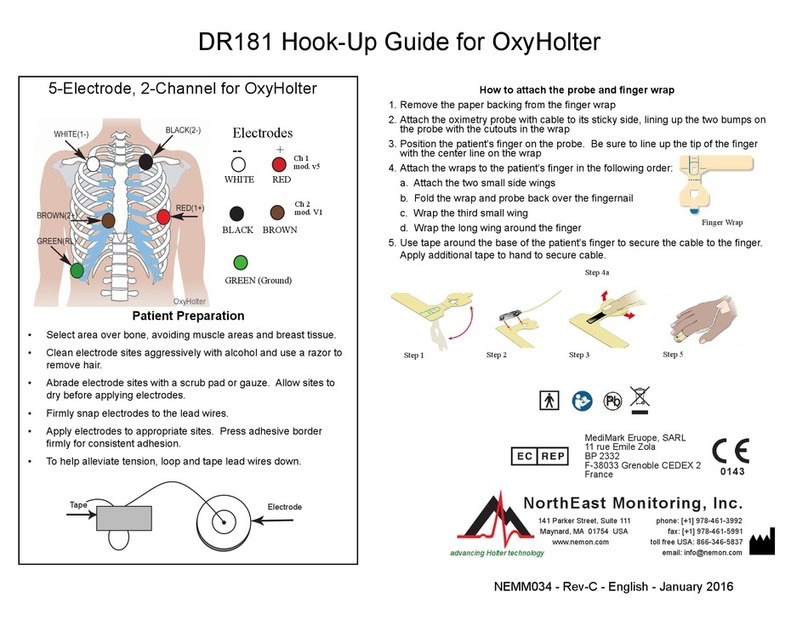
NorthEast Monitoring
NorthEast Monitoring DR181 HOOK-UP GUIDE
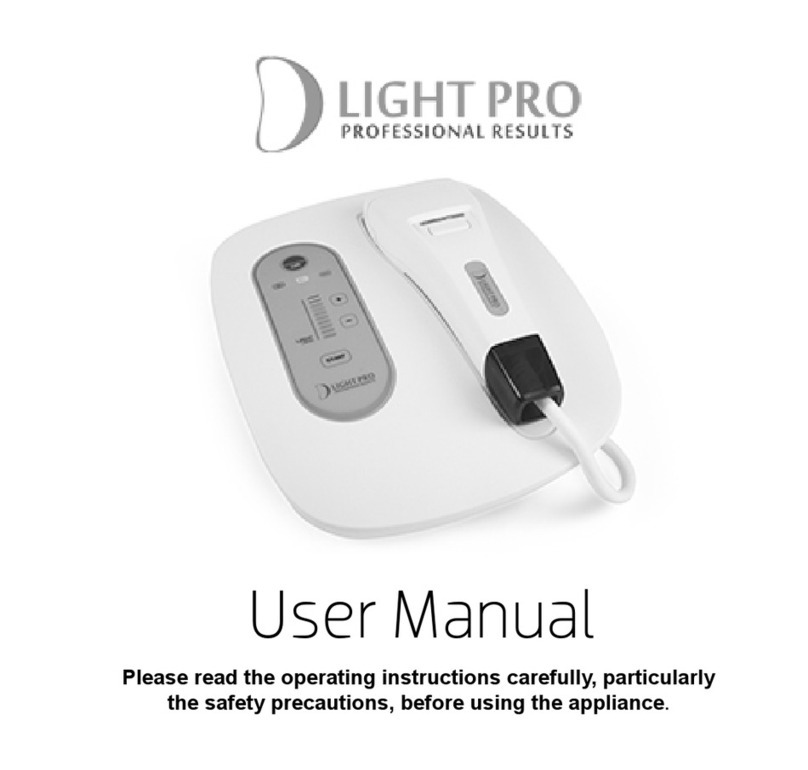
D Light
D Light PRO user manual
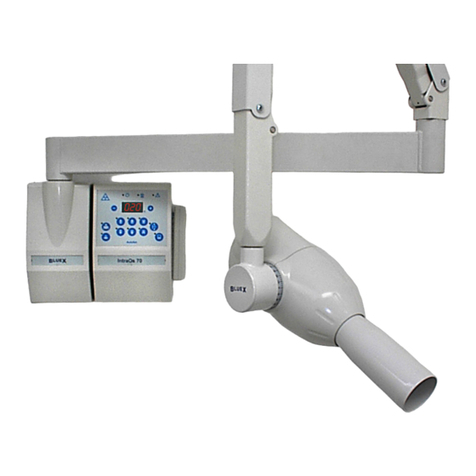
Blue X
Blue X IntraOs 70 Service & installation manual
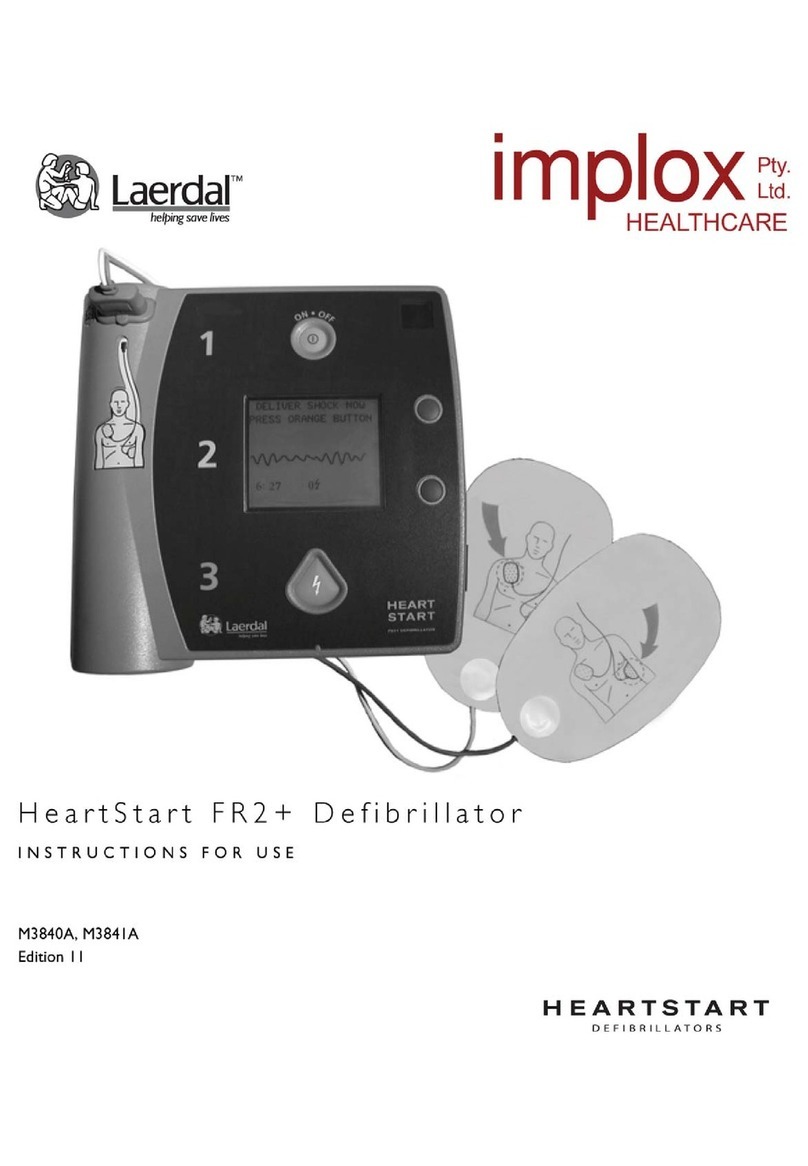
IMPLOX
IMPLOX Laerdal HeartStart FR2+ Series Instructions for use
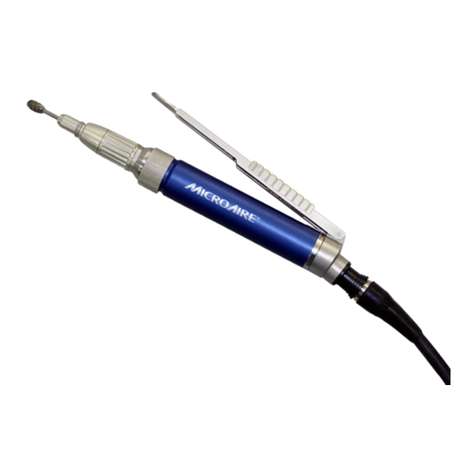
MicroAire
MicroAire 5000 Series Instructions for use
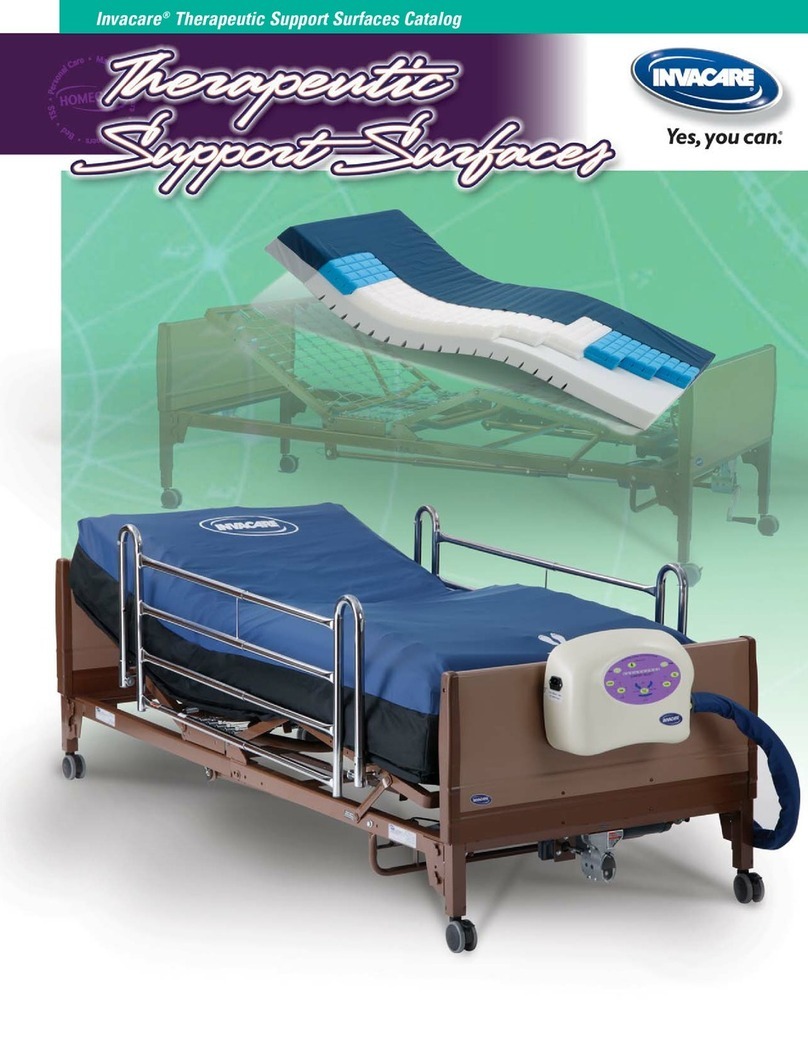
Invacare
Invacare CareGuard CG101080 Catalog
DeVilbiss
DeVilbiss EasyFit Nasal Mask Silicone Instructions for use
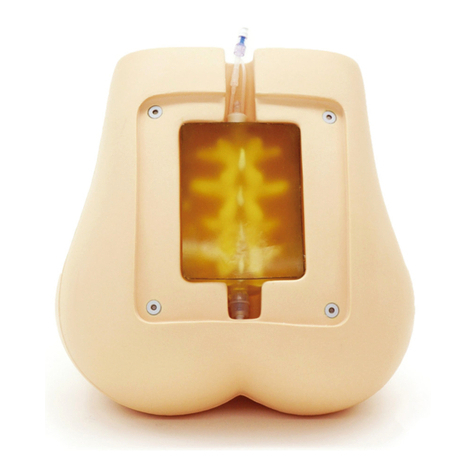
Kyoto Kagaku
Kyoto Kagaku M43E instruction manual
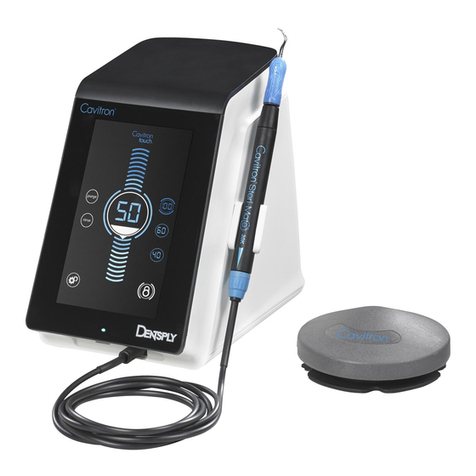
DENTSPLY
DENTSPLY Cavitron Touch Directions for use

Alcedo
Alcedo AE174 quick start guide
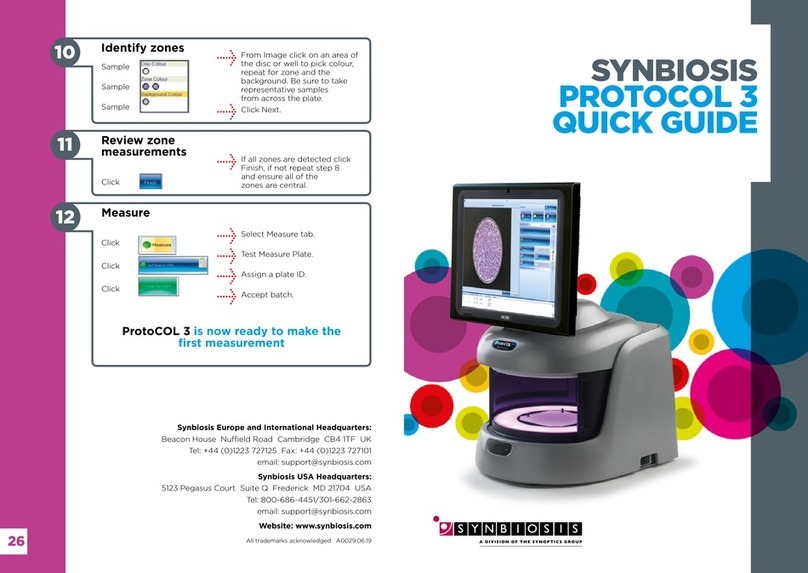
SDI
SDI Synbiosis ProtoCol 3 quick guide
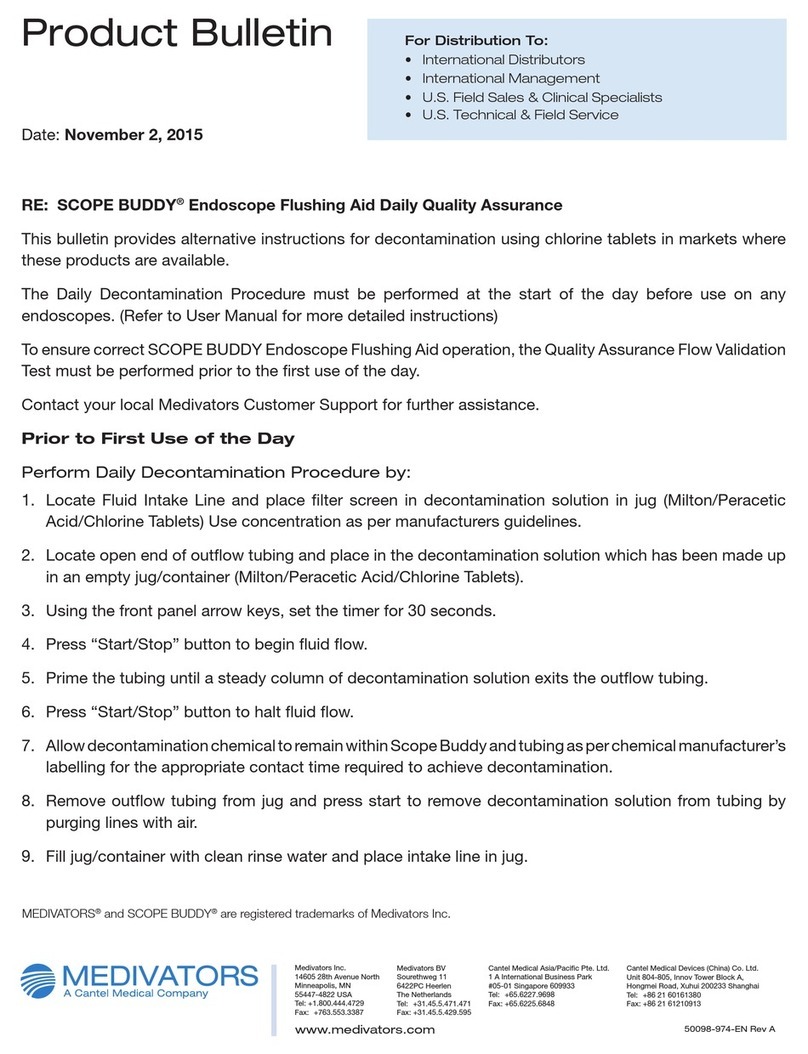
Cantel Medical
Cantel Medical MEDIVATORS SCOPE BUDDY Product bulletin
